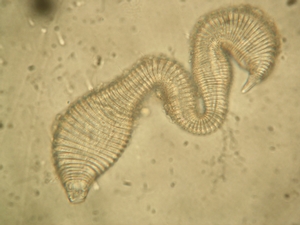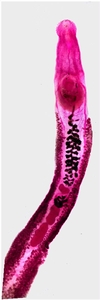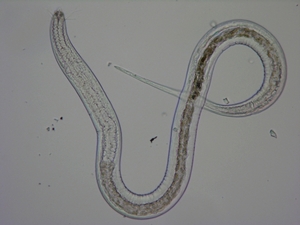Ashleigh B. Smythe
Scholar-in-Residence
Hamilton College
198 College Hill Rd.
Clinton, NY 13323
Office: Science Center 2033
Office phone: 315-859-4997
Email: asmythe@hamilton.edu
Research Interests
My research focuses on the evolution and ecology of invertebrate animals. While my primary research interest is in the evolution and diversity of free-living nematodes, students in my lab also conduct research on other invertebrates, especially parasites.
Free-living marine nematodes
Marine sediments support by far the greatest diversity of nematode species, and I aim to understand their diversity, evoluton, and taxonomy.
Parasite ecology and evolution
My students and I study a variety of parasitic worms. We have examined the diversity and distribution of leeches infecting turtles, the community of parasites in muskrats, and the effect of the mouse nematode Heligmosomoides bakeri on a model of type I diabetes.









